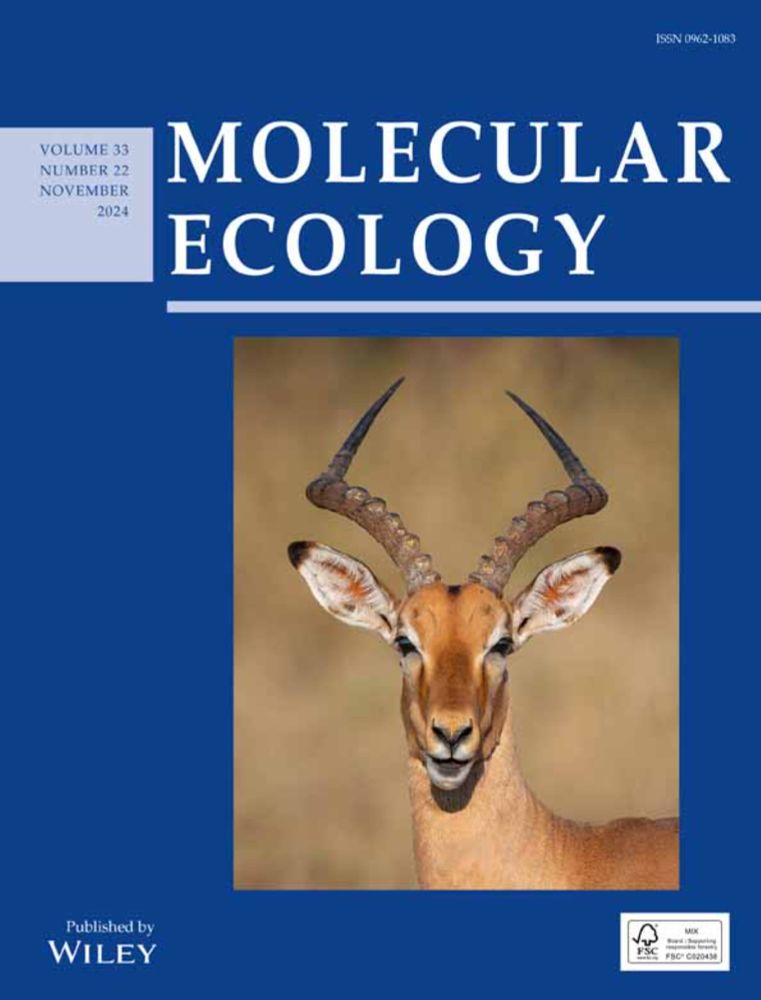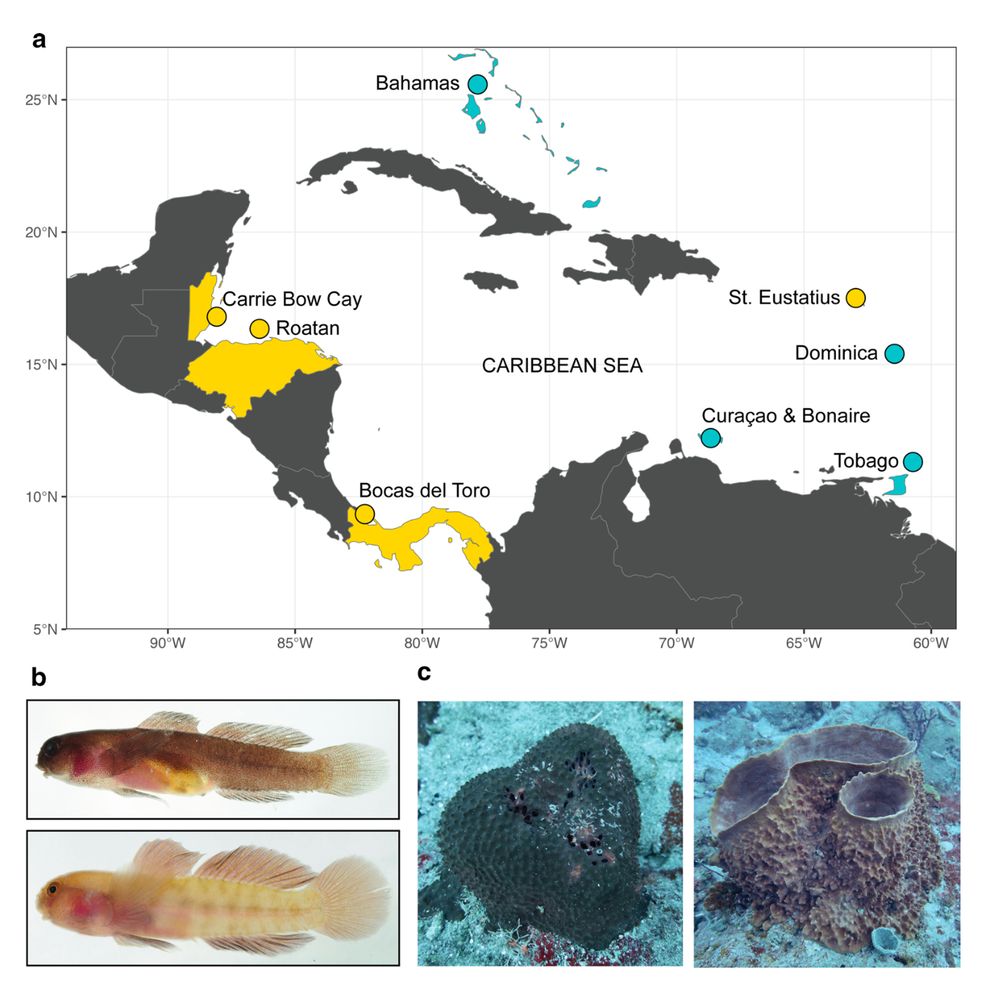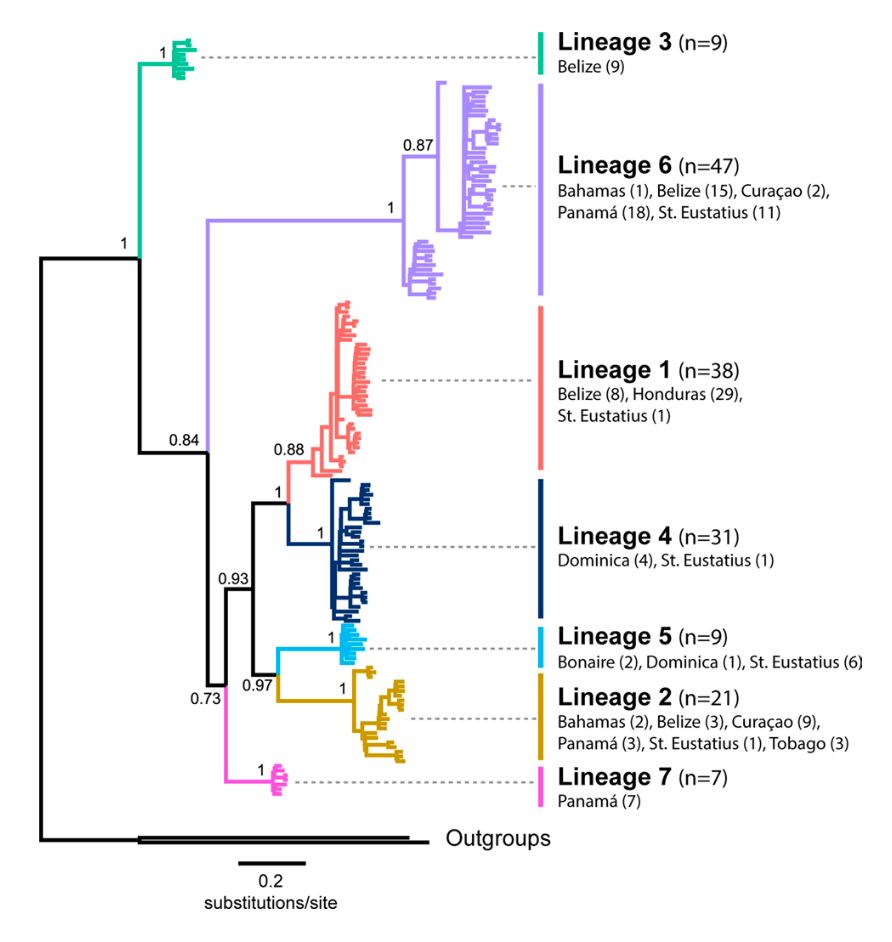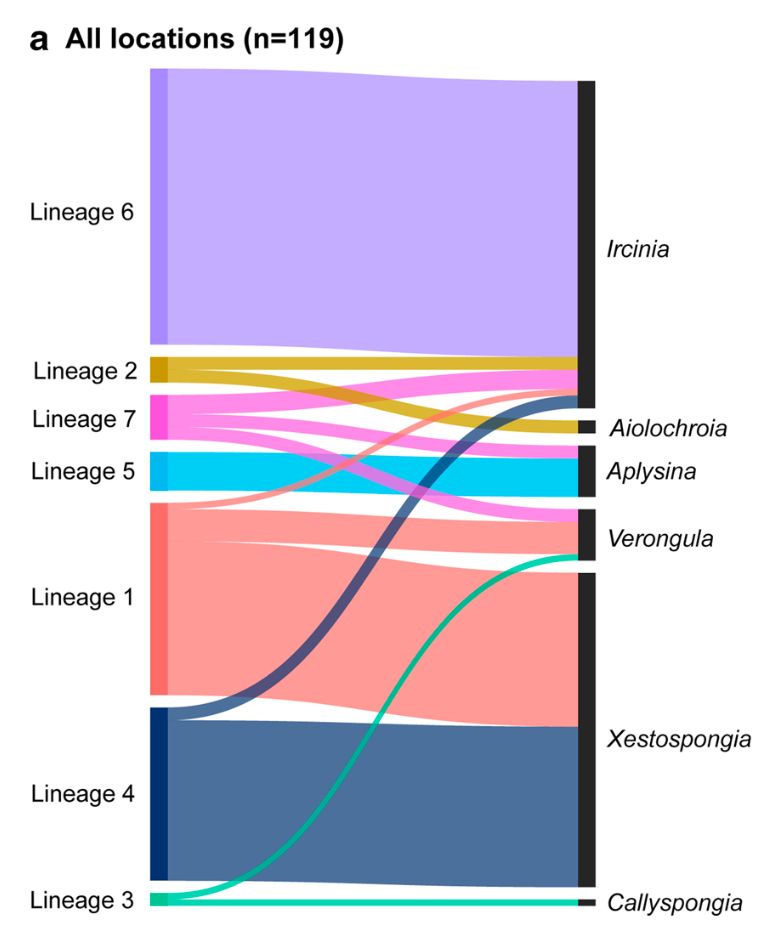
eDNA | pop gen | coral reef fishes | elasmobranchs | #FirstGen 🇧🇷
ingridbunholi.weebly.com
We compiled the most applied rapid DNA/eDNA-based ID tools & primers for #sharks and #rays 🦈
A practical guide to help scientists, managers & enforcement choose the right method for conservation action.
Read here: doi.org/10.1111/1755... #OpenScience #eDNA
We compiled the most applied rapid DNA/eDNA-based ID tools & primers for #sharks and #rays 🦈
A practical guide to help scientists, managers & enforcement choose the right method for conservation action.
Read here: doi.org/10.1111/1755... #OpenScience #eDNA
Main traits: Max 4.6cm; snout yellow/brown with short narrow yellow bar; narrow yellow stripe along upper body (from top eye to tail fin base)
Distribution: SE Caribbean


Main traits: Max 4.6cm; snout yellow/brown with short narrow yellow bar; narrow yellow stripe along upper body (from top eye to tail fin base)
Distribution: SE Caribbean
Nassau grouper (Serranidae)
Main traits: Max 122cm; tan + irregular dark bars; black saddle (mark) tail base; tan stripe Y shape through eyes.
Distribution: Bermuda to Guyana
📷 Mark Betts (STRI website)


Nassau grouper (Serranidae)
Main traits: Max 122cm; tan + irregular dark bars; black saddle (mark) tail base; tan stripe Y shape through eyes.
Distribution: Bermuda to Guyana
📷 Mark Betts (STRI website)
Main traits: max 4cm; small pointed spines on snout; colors changeable (male colorless to dark - females yellowish)
Distribution: The Bahamas to the South Caribbean
📷 CABRA lab


Main traits: max 4cm; small pointed spines on snout; colors changeable (male colorless to dark - females yellowish)
Distribution: The Bahamas to the South Caribbean
📷 CABRA lab
I’ll be sharing one species a day to keep me on track - hopefully it lasts 😆 If you’re not a fan of fish... well, you’ve been warned.
I’ll be sharing one species a day to keep me on track - hopefully it lasts 😆 If you’re not a fan of fish... well, you’ve been warned.
These minimum reporting guidelines for metabarcoding workflows extend from the physical layout of laboratories through to data archiving enhance trust and reliability in data
mbmg.pensoft.net/article/1286...

These minimum reporting guidelines for metabarcoding workflows extend from the physical layout of laboratories through to data archiving enhance trust and reliability in data
mbmg.pensoft.net/article/1286...
Big thanks to @ednacollab.bsky.social for making it all happen! 💡💫





onlinelibrary.wiley.com/doi/full/10....

onlinelibrary.wiley.com/doi/full/10....


We investigate Risor ruber, the tusked goby, a tiny sponge-dwelling fish.
Across the Caribbean, we find seven distinct genetic lineages within Risor and discover that two Risor lineages specialize on a single sponge host!



We investigate Risor ruber, the tusked goby, a tiny sponge-dwelling fish.
Across the Caribbean, we find seven distinct genetic lineages within Risor and discover that two Risor lineages specialize on a single sponge host!



"Analysing biological colour patterns from digital images: An introduction to the current toolbox"
onlinelibrary.wiley.com/doi/10.1002/...
"Analysing biological colour patterns from digital images: An introduction to the current toolbox"
onlinelibrary.wiley.com/doi/10.1002/...

@amfisheriessoc.bsky.social

@amfisheriessoc.bsky.social
TX SWMS is participating in UT STEM Girl Day hosted by UT WiSTEM
Stop by to learn about corals, careers in marine science, and the work TX SWMS is doing across the state of Texas!
🔗https://girlday.utexas.edu
#UTGirlDay

TX SWMS is participating in UT STEM Girl Day hosted by UT WiSTEM
Stop by to learn about corals, careers in marine science, and the work TX SWMS is doing across the state of Texas!
🔗https://girlday.utexas.edu
#UTGirlDay


We show that despite increases in regulations governing #shark fisheries, shark mortality has actually increased from 76 million in 2012 to 80 million in 2019, 25 million of these comprising threatened species
doi.org/10.1126/scie...



We show that despite increases in regulations governing #shark fisheries, shark mortality has actually increased from 76 million in 2012 to 80 million in 2019, 25 million of these comprising threatened species
doi.org/10.1126/scie...

